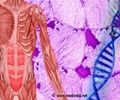New chromosomal mutations and their role in the development of resistance of Escherichia coli (E. coli) to broad-spectrum antibiotic fosfomycin identified.

‘New chromosomal mutations and their role in the development of resistance of Escherichia coli (E. coli) to broad-spectrum antibiotic fosfomycin identified.’





"In this study, we have identified novel chromosomal mutations both selected in vitro and in vivo and experimentally determined their role in fosfomycin resistance," explained presenting author Prof. Vincent Cattoir. "Mutations in uhpB and uhpC appear to be more frequent than those in already known genes." Researchers found no genetic mutations in the 11 E. coli isolates that responded to fosfomycin, with MICs ranging from 0.5 to 8 mg/L. However, they found several mutations in each of the nine fosfomycin-resistant isolates, which exhibited MICs in the range of 64-256 mg/L.
Cattoir's team obtained two mutants that corresponded with mutations in two novel genes, uhpB and uhpC. Additional mutations were noted on genes galU and Ion. When researchers introduced the uhpB and uhpC mutations, the amount of fosfomycin needed to stop the visible growth of E. coli was 64-fold. Single mutations in the galU and Ion genes only caused a two-fold increase in the MIC. Three other uhpB/uhpC mutations each led to a 128-fold increase in fosfomycin MICs.
Fosfomycin is an antibiotic used to treat bladder and urinary tract infections. Fosfomycin resistance results from a set of known chromosomal mutations or the acquisition of mutated genes from elsewhere, such as other bacterial species. But resistance is also observed in some strains that do not have these known mutations or acquired genes.
Source-Eurekalert











